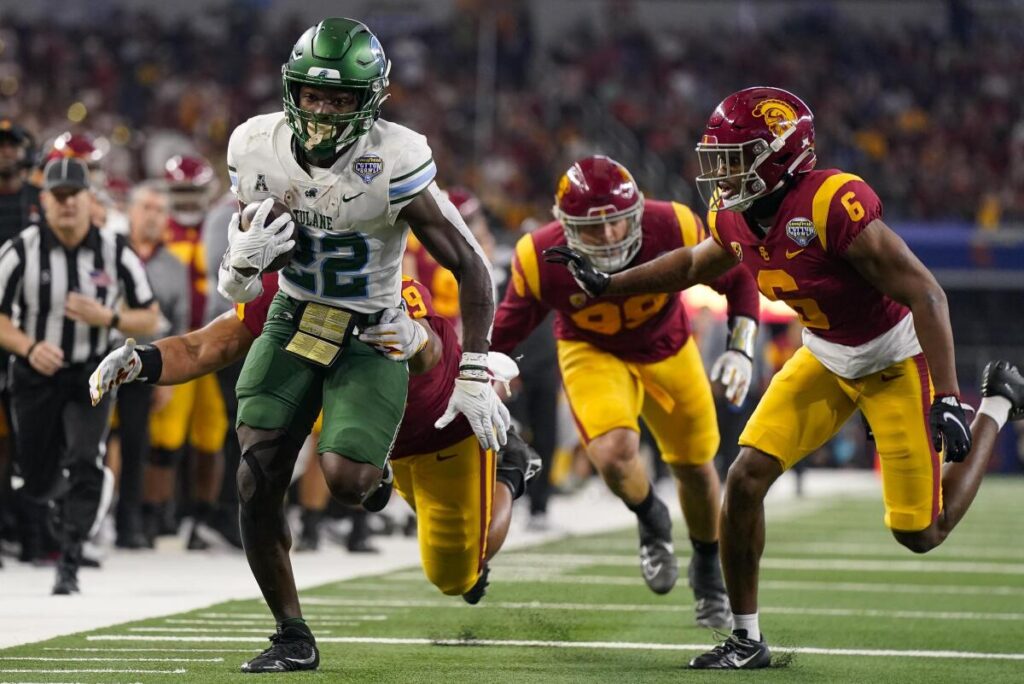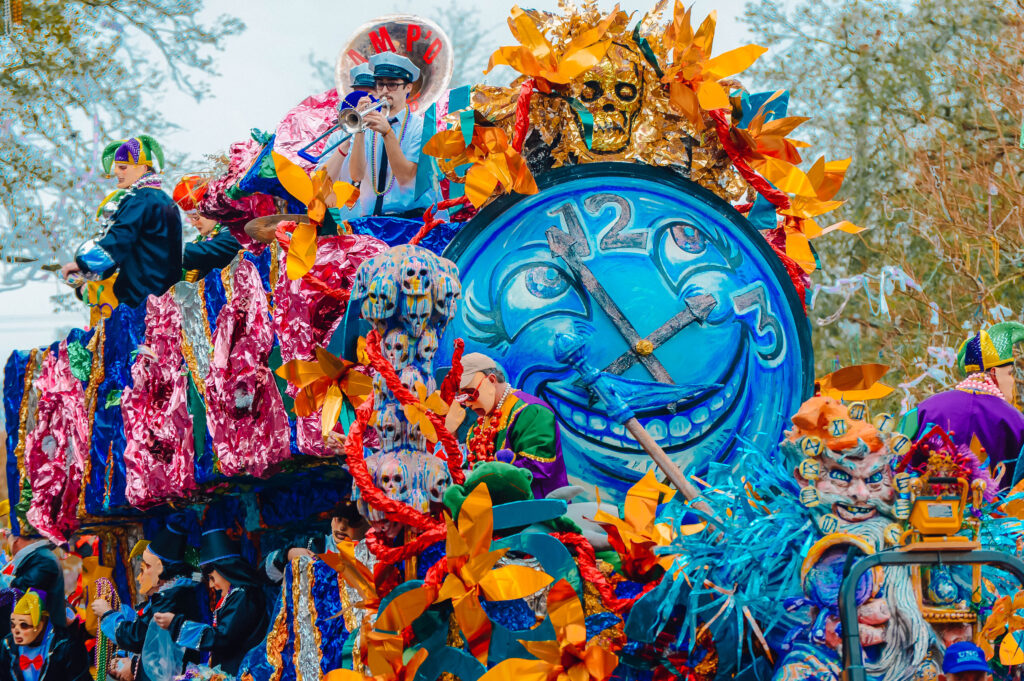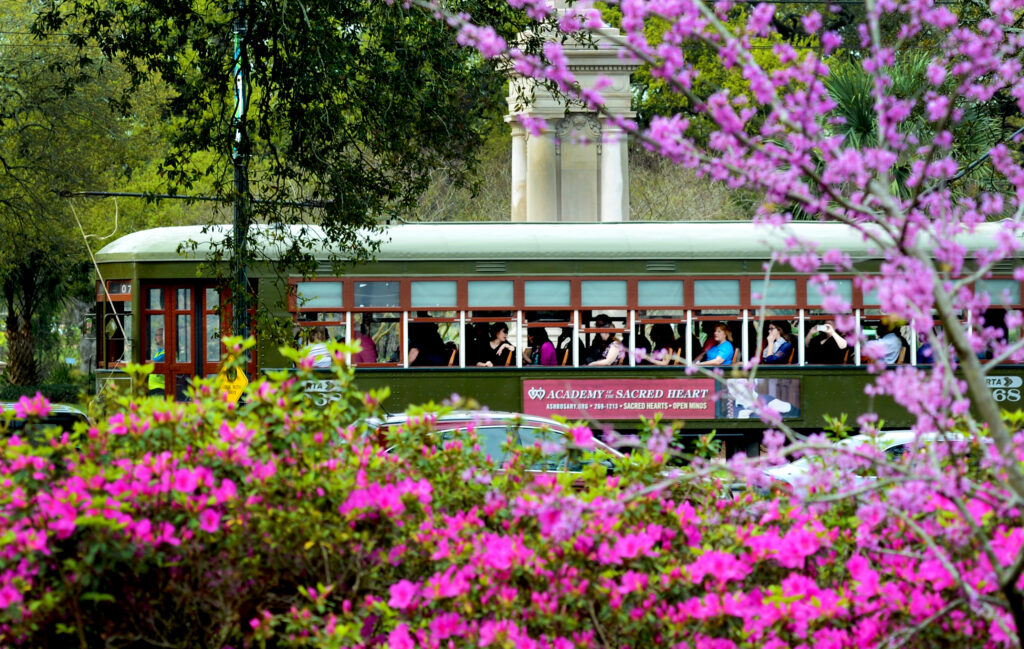Happy August, y’all! Our application is now live! This year, we did the ABCs of Tulane to celebrate the start of the new admission cycle. Since we couldn’t spend too long on each topic in the video, we wanted to expand a bit more on these 26 things that make Tulane and New Orleans great!
A is for Architecture
Since the first architecture courses taught in 1894, the School of Architecture has undergone a massive transformation to now offer coursework in Architecture, Real Estate, Design, and Preservation Studies. Opportunities such as URBANbuild and Research Studios allow students to get outside of the classroom and utilize their knowledge in real-time alongside faculty and real-world clients. The architecture of the city of New Orleans is gorgeous, as well!
B is for Business
Tulane’s A.B. Freeman School of Business offers 4 majors, six, minors, and two specializations withing the Bachelor of Science in Management program. Some noteworthy programs include the Master of Accounting program and experiential courses such as Burkenroad Reports and the Darwin Fenner fund.
C is for Crawfest
Occurring every spring, Crawfest is a student-run music and arts festival that features thousands of pounds of crawfish. Started in 2007, its goal was to bring the best parts of New Orleans culture to campus. Students who run the event can gain valuable professional experience in areas such as marketing, finance, and event production. To date, it is considered one of the largest student-run events in the country!

Crawfest 2022
D is for Decadence
Southern Decadence began in 1972 as an end-of-summer party for a small group of friends, and it has grown to become a multi-day celebration that attracts hundreds of thousands of visitors from around the world. The event is often regarded as a mix of New Orleans Pride and “Gay Mardi Gras”.
E is for Engineering
Tulane’s School of Science and Engineering is home to 14 majors and 17 minors. As a student in the School of Science and Engineering, you will be offered outstanding opportunities for learning and discovery in science and engineering in an environment that is student-focused, research-intensive, interdisciplinary, entrepreneurial, and responsive to the needs of the community.
F is for Food
We could spend a whole blog post on the food of New Orleans. Of course, we’re famous for Creole and Cajun cuisine, but there is so much more to enjoy here in the city. Wherever you are in town, you can find various delicacies at a sit down restaurant, neighborhood favorite, or a hole in the wall. We’ve explored many of these places in our NOLA Noms series!
G is for Green Wave
Tulane fields 18 varsity sports and competes in the American Athletic Conference. Some recent highlights include Tulane Baseball winning back-to-back conference titles, and the football team beating USC in the Cotton Bowl to finish the 2022 season ranked 9th in the country. We even have some current students representing the Green Wave in Paris!

Credit: LA Times
H is for Hullaballoo
Heard after touchdowns at football games, the Hullaballoo cheer is just plain fun to scream:
A One, A Two, A Helluva Hullabaloo
A Hullabaloo Ray Ray
A Hullabaloo Ray Ray
Hooray Hooray Vars Vars Tee Ay
Tee Ay Tee Ay Vars Vars Tee Ay
Tulane!
I is for International
Known as a global city, New Orleans is built from Spanish, French, Afro-Caribbean, and Vietnamese influences. On our own campus, students hail from over 60 different nationalities. With organizations like The Asian American Student Union, TU Gente, or The India Association of Tulane and departments such as our Center for Global Education and the Office of International Students and Scholars, opportunities to expand one’s cultural comprehension are endless.
J is for Jazz
New Orleans known for being the birthplace of Jazz. Originating in the 19th century, jazz music is characterized by its ability for improvisation, flexibility, and smooth rhythms. Many times you can hear the “call-and-response” sounds in jazz music, be sure to respond back and enjoy the fun! Jazz music in New Orleans is performed seven days a week everywhere from historic venues to your neighborhood street corner.
K is for King Cake
Only served during Mardi Gras season, king cake is doughier version of a cinnamon roll, typically iced in yellow, green and purple – the colors of Mardi Gras. and is frequently packed with fruit fillings and decadent cream cheeses. Check out some of our staff members trying king cakes around the city! Inside the king cake, is a hidden small plastic baby. The lore is that whoever finds it must bring the next king cake- so the fun never ends!
L is for Liberal Arts
The School of Liberal Arts at Tulane encompasses the arts, humanities, and social sciences through 16 departments and 19 interdisciplinary programs as well as the Carroll Gallery, Shakespeare Festival, Summer Lyric Theatre, and the Middle American Research Institute. The School of Liberal Arts is the largest of Tulane’s nine schools with the greatest number of enrolled students, faculty members, majors, minors, and graduate programs.
M is for Mardi Gras
Mardi Gras is more than just Fat Tuesday. It is a season! Students are able to take in the cultural wonders by walking down St. Charles Avenue to catch the parades, surrounded more by local families than tourists. Many Tulane faculty and staff ride in krewes, so spirits are high across campus. Check out our recent video to see what it’s like from a student perspective!

N is for Newcomb-Tulane College
Newcomb-Tulane College represents all of our undergraduate programs at Tulane. Through the core curriculum and academic majors, students gain foundational knowledge to curate a unique journey through exploring academic programs throughout all five undergraduate schools. With Tulane’s academic flexibility, you can graduate with more than one degree through multiple schools that allow students to find their true passions.
O is for the Office of Multicultural Affairs
The Office of Multicultural Affairs brings students, faculty, staff and alumni together to create and sustain an equitable learning environment through community engagement, advocacy, and social justice education. Since its founding in 1987, the office has offered programs to facilitate meaningful conversations and interactions between students from many different backgrounds and cultures.
P is for Public Health
In 1912, the Tulane University School of Public Health and Tropical Medicine (SPHTM) became the very first school of public health in the country. In fact, Tulane’s commitment to public health goes back to 1834 when the university was founded to address concerns of cholera, yellow fever, smallpox, and malaria. Today, Tulane SPHTM continues to live out that mission with research and education that spans the gamut of specialty areas in public health, from biostatistics to maternal and child health, epidemiology to nutrition, health policy to clinical research, environmental health sciences to violence prevention, and much, much more.
Q is for Quarter
The historic French Quarter was the first settlement in the city. You can go on haunted ghost tours, eat light and fluffy beignets at Café Du Mondé, and walk through the French Market. Every year millions of people come to celebrate music and food through festivals such as the French Quarter Fest and Crescent City Blues & BBQ Festival. Come experience 400 years of history in the French Quarter!
R is for Research
Undergraduate research is an important part of Tulane; it’s who we are. Being designated as an R1 university by the Carnegie Foundation, we receive nearly $200 million awards annually for our faculty to conduct research in their respective fields. You can get involved as early as your first year in college through the Office of Research!
S is for St. Charles
Tulane moved to its current campus on St. Charles Avenue in 1894. We are located across from the gorgeous Audubon Park, and the St. Charles Streetcar is accessible right in front of campus. You can ride the streetcar all the way downtown. St. Charles is known for its beautiful houses, shady oak trees, and many shops and restaurants!

A streetcar rumbles down St. Charles Avenue in front of the Tulane University uptown campus where the azalea bushes and redbud trees make a colorful announcement that spring has arrived in New Orleans. Photo used with March 24, 2015, New Wave In Focus “Sprung” (http://tulane.edu/news/newwave/032415_spring_on_campus.cfm)
T is for TUSTEP
Known as Tulane’s first and only Service dog Training and Education Program, TUSTEP, works with pups from Canine Companions for one and a half years to raise and train them into assistance dogs. The organization uses their platform to connect with the Tulane Community through events and puppy sitting to educate on the importance of service dogs. These puppies can arrive on campus as young as 8 weeks old, and they attend everything from campus events to work shifts with their student raisers.
U is for Uptown
Tulane University is located in the city of New Orleans and situated in the Uptown Neighborhood District. Some of our staff like to say that we have the perfect balance with a college town neighborhood in a city. We’re right across the street from the beautiful Audubon Park, Audubon Zoo and “The Fly” where students can cross the road to enjoy a nice sunset on the Mississippi River. Students can walk down Freret Street to experience art markets, listen to live music seven days a week, and Freret Street Festival. New Orleans hosts over 140 festivals every year so students don’t get a ton FOMO since our city hosts so many options for food and music festivals every month!
V is for Visit
We offer in-person campus tours six days a week, twice a day where you will hear an information session from an Admission Counselor and then get a campus tour. During the visit, we cover Tulane’s academic flexibility, our student life, how to apply, and the city of New Orleans all in one. If you cannot come visit, don’t worry! We also do host information sessions across the world where you can hear the same information if you were to visit campus, or you can attend one of the multiple virtual information sessions we host. We hope to see you soon!
W is for Warm
In New Orleans, you’ll have warm weather almost all year round with temperatures averaging 75 degrees as a high and 60 degrees as a low in the Fall. The weather changes to a freezing 45 degrees as a low and 66 degrees as a high in February, then it’ll heat back up in March and April before we get into the summer rainy season. With Louisiana’s tropical weather, we experience frequent rain in the summer with temperatures ranging up to 100 degrees. The weather is warm, and the people in the city of New Orleans provide an even warmer welcome when you come to Tulane.

The Fly
X is for X Marks the Spot
As seen on the map in the video, our location Uptown is about 3.5 miles from Bourbon Street. People are often pleasantly surprised by how beautiful and residential our campus is. Our campus is about 3/4 of a mile long and 1/2 a mile wide. Most residence halls are in the middle of campus, so it is a short walk to get anywhere you need to go! In our opinion, it’s perfect!
Y is for You
If you like warm weather all year round, top-notch cuisine, and culturally significant festivals, you should visit (as discussed under V). Tulane is an incredibly versatile school that can be a great fit for almost anyone. Whether you want to be a screenwriter, hedge fund manager, epidemiologist, architect, or anything in between, Tulane can prepare you for success in that field. Stay in touch and see for yourself!
Z is for Zydeco
In the 1800s, zydeco originated as dance music in southwestern Louisiana with roots to French, Afro-Caribbean, and Spanish styles. Originally played in small homes and dancehalls, zydeco was often apart of a gathering to bring a community together through upbeat music and dancing. The unique music first was played with an accordion but now has added more instruments like the electric guitar, saxophone and drums.
